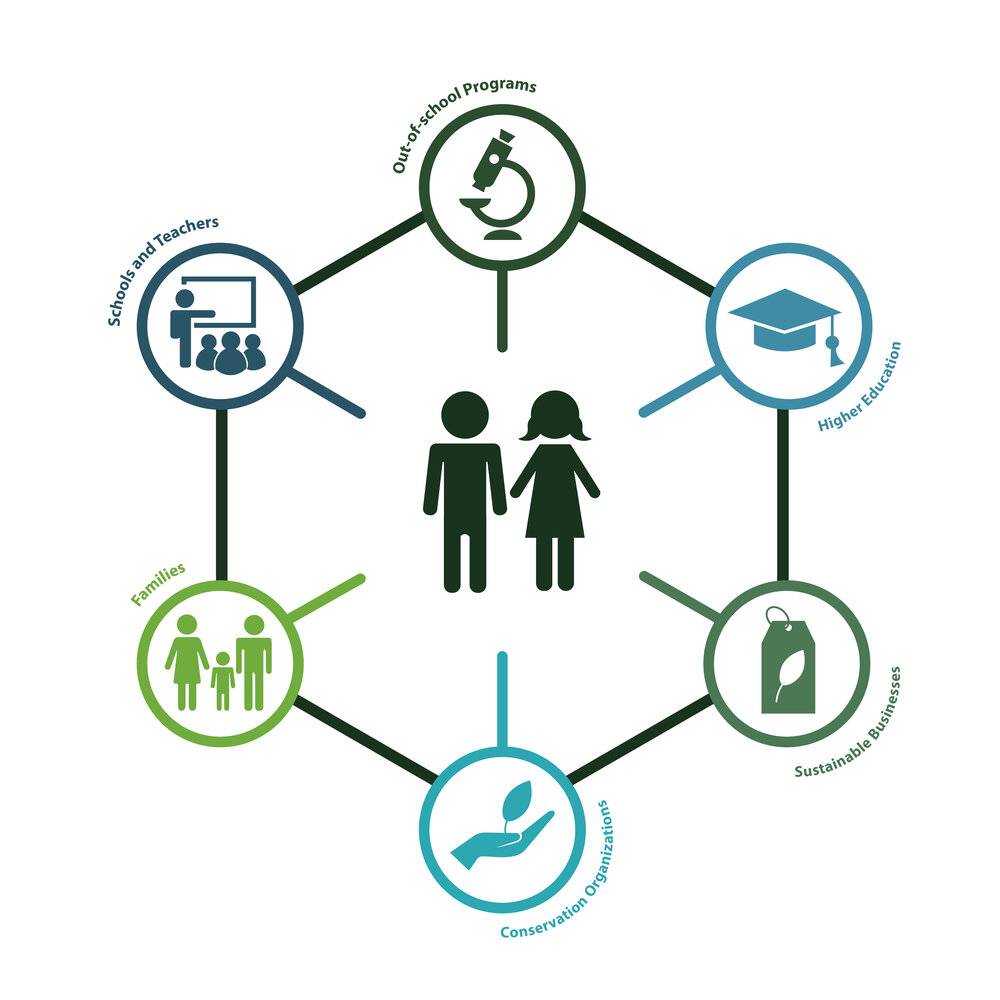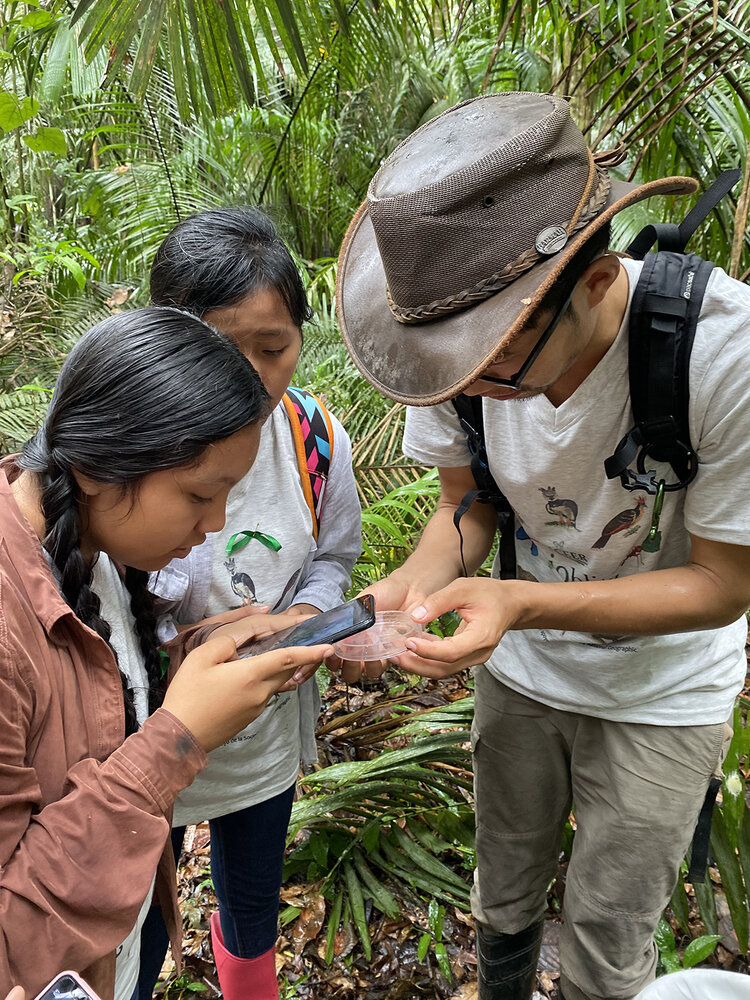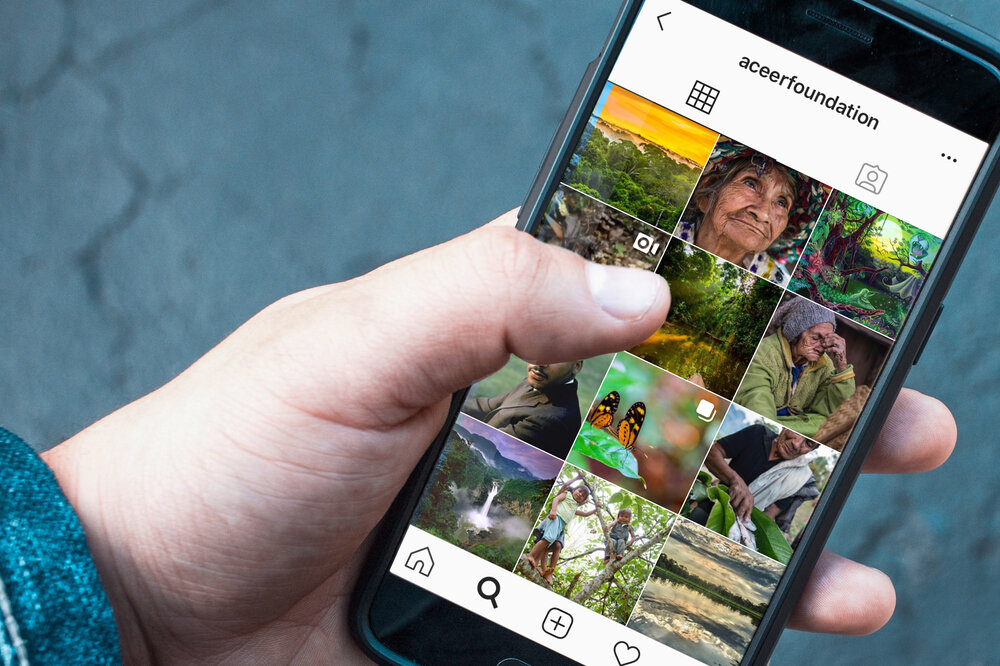Conservation Learning Web

The ACEER Conservation Learning Web directed by 2018 National Geographic Explorer, Carmen Chávez from 2018-2020, is a bold, new educational initiative that integrates environmental education in the classroom with out-of school programs and community programs.
Building upon the 25 plus years of experience on the ground in Peru, the web integrates experiential school-based environmental education programs with field-based teacher training with:
- Out-of-school programs
- Higher education
- Sustainable businesses
- Families
- Local and global conservation NGOs
The unique contributions of these diverse settings, working in symbiosis, will deliver transformative learning experiences that will enable young people in the region to become engaged, knowledgeable about their environment and conservation. This will yield positive outcomes in the service of conservation, restoration, and sustainable economic development now and in the future.

THE LEARNING WEB IS ESSENTIAL
The Amazon Basin in southeastern Peru, an epicenter of biodiversity, is threatened by illegal logging and other extractive practices that harm ecological and human health. The region has also experienced loss of habitat due to conversion of forest to agriculture and livestock grazing lands.
The local population is hampered in its ability to respond to these challenges due to:
- Poor formal education opportunities
- Little to no informal education
- Lack of local environmental literacy
- Few opportunities to participate in sustainable economic development.
There is a clear and urgent need for an educated and engaged local population, local environmental leaders, and awareness of and access to opportunities for sustainable economic development in order to protect the rainforest.
Our Approach

OUR APPROACH
Our approach is to develop a learning ecosystem which focuses on environmental education and is grounded in a collective impact framework.
A collective impact framework states that when addressing a complex issue, no single initiative, no matter how excellent, has the ability to make a significant impact on its own. ACEER’s primary strategy is to maintain established partnerships and to grow and cultivate these into the Learning Web.
The Learning Web connects all conservation-related learning environments in the classroom and the field and equips educators to lead students in active, experiential learning in diverse settings. The Web supports youth by allowing them access to new pathways and exploration for further learning and jobs. Pathways and opportunities for exploration enable young people to become engaged, knowledgeable, and skilled in environmental disciplines as they progress through childhood into adulthood.
Overall, we seek to both build and deepen student and teacher understanding of conservation and restoration in intentionally connected ways over time and across multiple settings. Through this collective impact framework, we build scientific skills and knowledge through multiple exposures and experiences. We also seek to spark and nurture young people’s interest in and enthusiasm for their local environment, while exposing young people to environmental professionals and sustainability-related education and career options. We support those under-represented in formal education (girls; linguistic, racial, and ethnic minorities; indigenous peoples) in order to promote diverse and inter-related learning experiences.
Impact
OUR IMPACT
Capacity building is a central component of the Conservation Learning Web. To create a new generation of environmentally literate citizens, conservation leaders, and sustainable communities will require an investment in students currently in the educational pipeline. Concurrently, though, we will need to develop the capacity of the stakeholders in the educational community of Madre de Dios, so they may better serve the children in their care.
Our ecosystem approach to education requires the establishment and management of a web of strategic partners, in addition to the schools, universities, and communities that will be served by our Conservation Learning Web. We already benefit from an existing network of partners. We are now expanding these collaborations with a goal of creating at least 10 new ones.
Our capacity development activities, through the Conservation Learning Web, has annually reached over 2,100 individuals, including students, teachers, university undergraduates, and families. While impacted by the COVID-19 pandemic, elementary students, high school students, K-12 teachers, university students, and family members will continue to be the direct beneficiaries of the Conservation Learning Web.
ACEER acts as a “prism” by being the central force aligning all the components of the Learning Web. While the prism effect works both ways. We expect that as we work though a collective direction towards Peru’s rainforest conservation with all our partners, later on, the students and everyone that went through the ACEER Web and prism, would define their path towards a sustainable choice in their everyday lives.

Get Involved
Our goal is to reach every teacher and every student in the Madre de Dios region of the Peruvian Amazon. Our funds from National Geographic and private donors helped get our Web up and running, but we need much more support to keep it going and to adapt it to changing needs within the region. That’s where you come in.

Donate Today
Support the Conservation Learning Web directly by making a charitable donation to the ACEER today!

Reach Out
Contact us if you have an idea or suggestion to grow the Conservation Learning Web either programmatically or financially.

Follow Us on Social Media
Follow us on social media to learn more about the amazon rainforest and stay up to date on ACEER’s programs and efforts to empower the conservation leaders of today and tomorrow!
